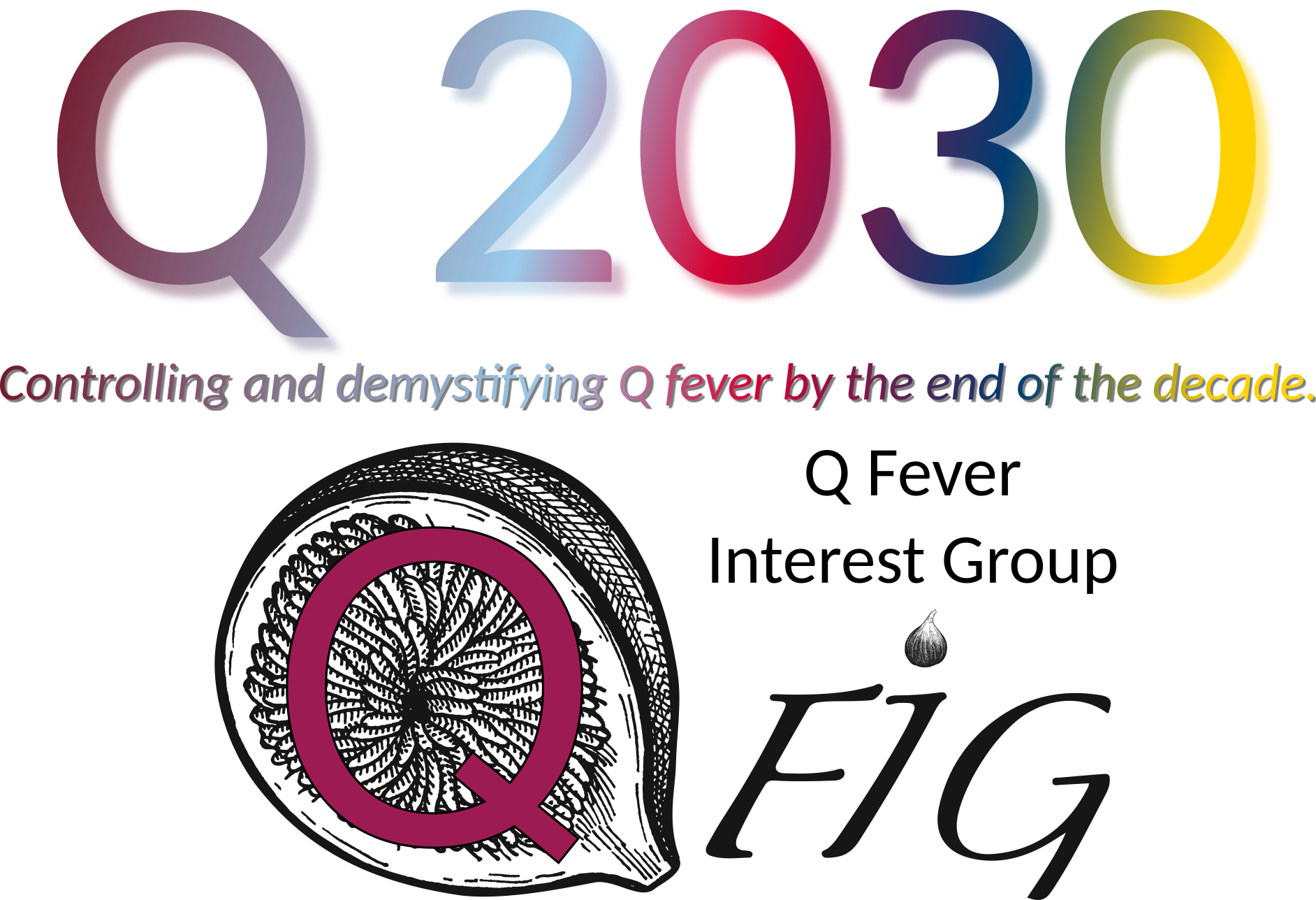Q2030
Q2030

On April 15th, 2024, QFIG launched the Q2030 initiative.
This initiative sets aspiration goals with a target to achieve these by 2030 at the latest.
These goals include:
A new vaccine.
The current vaccine , whilst highly effective, and the only registered Q fever vaccine in the world, is unsuitable for mass vaccination due to the need for pre-vaccination screening (serology and skin test) and can only be administered once.
QFIG members are currently developing a promising vaccine, which if successful, will not need pre-vaccination testing and can be re-administerd as a booster if necessary. This could mean the potential for mass vaccination in high-risk areas to significantly reduce cases of Q fever.
However, this vaccine will need considerable funding to eventuate.
Faster testing to improve diagnosis
Currently, it can take a week for Q fever blood tests in most regions of Australia.
QFIG members in Pathology Queensland encouraged a trial of "rapid-turn-around" PCR testing combined with communiques to Queensland members to consider testing for Q fever on patients with syndromes less suggestive of Q acute Q fever than previously. In addition, Pathology Queensland has been stewarding the addition of PCR to samples with only serology suggested, if parameters like biochemistry and haematology are suggestive of possible acute Q fever. SNP has a similar policy of stewardship which has been successful for several years.This has been a success with a significant increase in diagnoses, especially in hospitalised patients with the benefit of directing appropriate therapy earlier.
As well as encouraging similar testing processes throughout the rest of Australia, QFIG has an aspiration to encourage the development of a RAT by 2030, so that diagnosis (and potentially treatment) can be almost instant, anywhere.
For a RAT to be developed, QFIG is proposing a Q fever biobank (see below). One of the aims of this biobank is to have sufficient clinical material to enable new tests to be developed for both acute and chronic Q fever.
Q fever Biobank
As well as encouraging development of new diagnostic tests, a biobank would allow a better understanding of who is at risk of more severe aspects of this disease. A biobank needs to commence soon, because if the vaccine above is successful, it may be difficult to obtain clinival material in meaningful numbers after mass vaccination commences, and the ability to design better tests and gain a better knowledge of this disease may not be possible.
A Q fever biobank requires funding.
"National" Q fever Registry.
Whilst there are already State-based Q fever registries in Australia, the information collated differs between the states.
QFIG members are encouraging a synchronisation of the data-fields to form a defacto national registry, which can help answer questions about Q fever incidence and prognosis.
Q fever in pregnancy
The true incidence and affect of Q fever in pregnancy is surprisingly still relatively unclear.
QFIG members have several projects to help answer questions, including estimating the true cost of Q fever in pregnancy in Australia.
Improved epidemiology
Combined with the "national" registry, QFIG members hope to perform epidemiological studies to better estimate the risk of acquiring Q fever in particular settings.
Improved acccess to imaging technologies
Q fever disproportionately affects those in regional areas, often with vast distances to majopr health services.
QFIG is advocating for improved access to testing. For example, QFIG is advocating for PET-FDG scanners to be Medicare rebated for infection. PET-FDG scans may be useful for detecting Q fever progressing to more serious chronic conditions such as endocarditis and aortitis. Early detectiion may improve outcomes. PET-FDGs are also useful for cancers (which are medicare rebatable). In addition to medicare-rebates for infection, QFIG is also advocating for better access to PET-FDGs in regional/rural areas, to reduce the cost to the local community of having to commute to a large city for the tests, which will be of benefit to regional areas for multiple conditions.
Q fever endocarditis and aortitis
QFIG via the biobank and registry initiatives is attempting to improve knowledge of the life-threatening albeit rare vascular manifestations of Q fever. Several projects are in preparation to better predict transformation from acute Q fever to these serious sequelae, to improve management and outcomes
Other Q fever manifestations and conundrums
QFIG is hoping via the biobank and registry initiatives to better understand QFS (Q fever fatigue syndrome), paediatric Q fever, Q fever meningitis, and whether Q fever is causative (and frequency) of SIDS, malignancies and auto-immune diseases.
The need for funding and insitutional support to achieve these aims.
The inititives above require funds and support from government and non-government bodies to suceed. Any offers of support are most welcome!
QFIG has a large membership of enthusiastic health care workers and scientistics covering many fields from Public Health to veterinary medicine, to general practice, to infectious diseases, to pathology, to cardiology to name just a few.
With support we hope to tame the scourge of Q fever in Australia, to improve the quality of life especially in regional and remote Australia.Innovations developed in Australia in turn can be exported world-wide, to improve Q fever outcomes globally.
